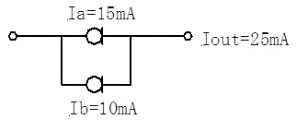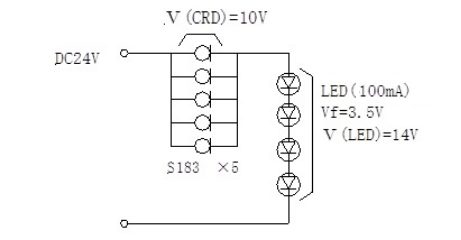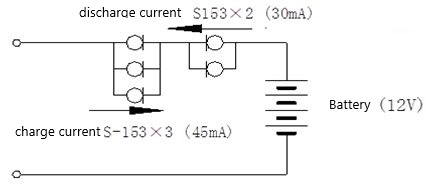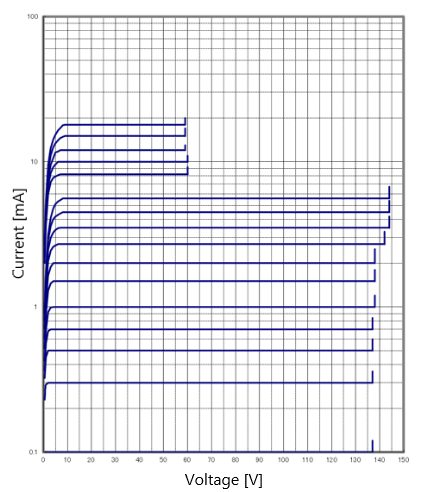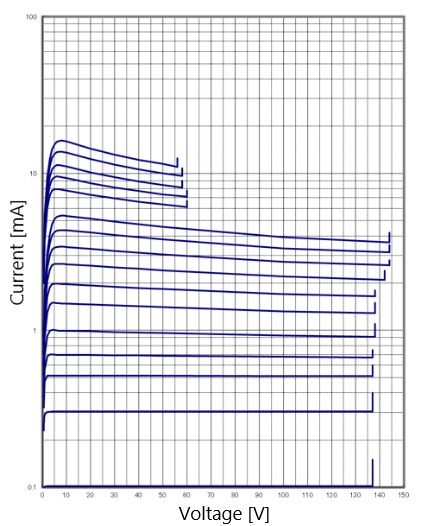A2.A2. Series connection is possible by protecting the CRDs from overvoltage.
CSince each CRD can be considered as a current source, series connection of current sources is generally prohibited, but the following method enables the use of series connections.
If CRDs are simply connected in series, the voltage will be concentrated on the side with the lowest current value, resulting in the problem of the maximum working voltage being exceeded.
Therefore, it is necessary to devise a way to ensure that the maximum working voltage of the CRD is not exceeded. As shown in the figure below, a zener diode is connected in parallel with the CRD to protect the CRD from overvoltage. At this time, a product with the same current value should be selected for the CRD.
Figure 3. Example of series connection
For the zener diode to be connected, one should be selected whose breakdown voltage does not exceed the maximum working voltage of the CRD. Table 1 shows a correspondence table.
Table 1: Correspondence table for zener diodes when CRDs are connected in series
| Characteristics |
E series |
S series |
| Maximum working voltage |
Zener voltage |
Maximum working voltage |
Zener voltage |
| 101~562 |
100 |
91 |
100 |
91 |
| 822 |
30 |
27 |
50 |
47 |
| 103 |
30 |
27 |
50 |
47 |
| 123 |
30 |
27 |
50 |
47 |
| 153 |
25 |
22 |
50 |
47 |
| 183 |
25 |
22 |
40 |
36 |
Figure 4. Example of series connection circuit
By connecting CRDs in series, it is possible to supply constant current to the load over a wide voltage range of 85 VAC to 220 VAC. However, this circuit is not an efficient circuit because the CRD bears most of the voltage. Therefore, it is an effective circuit when the current is small.

